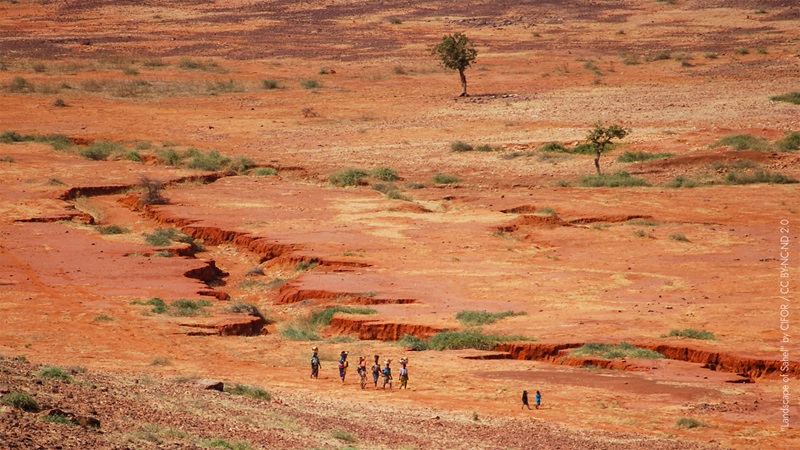
Said Omari
What's behind the variations on precipitation patterns?
Most Read Stories Today
-
Water Scarcity and Artificial Rainfall: The Positive and The Negative Effects of Cloud Seeding, including Health Hazards and Climate Implications.
-
Renewable Energy in Rural Areas: Challenges, Opportunities, and Successful Rural Projects
-
Bridging the Gulf Between Scientific Knowledge and Public Understanding.
-
Are African Plants Getting Ignored Amidst the Climate Change?
-
South Korea's floods: root causes and prevention strategies.
-
Degenerative Impact of Hydrocarbons On The Environment.
-
Climate Change's Grip on Northern Ghana's Agricultural Landscape.
-
Community-Based Adaptation: Land Management and Fire Prevention Techniques in the Heart of Mexico
-
Negative Impacts of Climate Change on Food Security in South Africa
-
Successes and Failures of Paris Agreement
Precipitation patterns describe the amount and distribution of rainfall or other forms of precipitation over a specific period, such as a season or year, within a particular region.
Precipitation patterns refer to the seasonal cycles of dry and wet periods in a specific area. These patterns vary significantly from one region to another and may also change within the same location due to various factors. Most of these changes, however, are influenced by human activities. Climate change vulnerability describes the degree to which ecosystems or societies are at risk due to the impacts of climate change. Higher risks indicate greater vulnerability, whereas lower risks signify reduced vulnerability.
Causes of Variations in Precipitation Patterns
The geographical location of an area is a critical determinant of its precipitation patterns. Desert regions, typically found between 15° and 35° north and south of the equator, experience minimal rainfall because dry air descends from high-pressure systems. Similarly, large continental interiors tend to be dry due to their distance from moisture sources. In such regions, clouds lose their moisture before reaching the center of the continents, as seen in areas like Central North America.
Polar regions also receive little precipitation. The cold air in these areas cannot hold as much moisture as warm air, which reduces the likelihood of rain or snowfall. Conversely, areas near the equator receive abundant precipitation due to constant solar heating. This process causes large-scale evaporation, resulting in moist air that rises, cools at higher altitudes, and forms convectional rainfall. Mountain ranges located near water sources also experience high levels of precipitation as moist air is forced upward, cools, and condenses into rain.
While geographical factors largely explain variations in precipitation patterns, other contributors, including climate change, play a significant role. Climate models predict that rising global temperatures will intensify the earth's water cycle by increasing evaporation. This could lead to higher rainfall in some regions and drying in others.
Precipitation Patterns and Climate Change
Climate change influences precipitation patterns by causing global temperatures to rise. As the air becomes warmer, it holds more moisture, leading to increased evaporation from land and water surfaces. This, in turn, results in heavier precipitation and more frequent downpours in some areas. However, this precipitation is unevenly distributed globally.
Regions in higher latitudes are expected to experience more rainfall, while areas closer to the equator may see a decline. The shifting patterns are attributed to changes in air and ocean currents driven by climate change. These disruptions have significant consequences, as areas with excessive rainfall face flooding, and those with reduced precipitation experience droughts. Both scenarios negatively impact agriculture, water supplies, energy production, biodiversity, and overall economic stability.
Addressing Climate Change Vulnerability
Mitigating the risks posed by climate change requires comprehensive strategies. Vulnerable communities, particularly those reliant on natural resources, need to adopt resilient approaches to production. Enhancing the adaptive capacity of individuals and institutions at local, regional, and national levels is essential to reducing vulnerability.
Improved communication between scientists and decision-makers is equally important. Effective integration of natural and social science insights into climate-related policies can enhance decision-making processes. However, the use of climate data in policymaking remains limited. To address this gap, participatory approaches, such as scenario development, can help engage decision-makers and generate solutions that are well-informed and practical.
The changing precipitation patterns caused by climate change pose significant risks to human and environmental systems. Strong measures are needed to mitigate these impacts and reduce vulnerability. Efforts to enhance resilience, improve communication, and integrate scientific knowledge into decision-making are essential for creating a sustainable and climate-resilient future.



 English
English العربية
العربية Български
Български 简体中文
简体中文 繁體中文
繁體中文 Hrvatski
Hrvatski Čeština
Čeština Dansk
Dansk Nederlands
Nederlands Suomi
Suomi Français
Français Deutsch
Deutsch Ελληνικά
Ελληνικά हिन्दी
हिन्दी Italiano
Italiano 日本語
日本語 한국어
한국어 Norsk bokmål
Norsk bokmål Polski
Polski Português
Português Română
Română Русский
Русский Español
Español Svenska
Svenska Català
Català Filipino
Filipino עִבְרִית
עִבְרִית Bahasa Indonesia
Bahasa Indonesia Latviešu valoda
Latviešu valoda Lietuvių kalba
Lietuvių kalba Српски језик
Српски језик Slovenčina
Slovenčina Slovenščina
Slovenščina Українська
Українська Tiếng Việt
Tiếng Việt Shqip
Shqip Eesti
Eesti Galego
Galego Magyar
Magyar Maltese
Maltese ไทย
ไทย Türkçe
Türkçe فارسی
فارسی Afrikaans
Afrikaans Bahasa Melayu
Bahasa Melayu Kiswahili
Kiswahili Gaeilge
Gaeilge Cymraeg
Cymraeg Беларуская мова
Беларуская мова Íslenska
Íslenska Македонски јазик
Македонски јазик יידיש
יידיש Հայերեն
Հայերեն Azərbaycan dili
Azərbaycan dili Euskara
Euskara ქართული
ქართული Kreyol ayisyen
Kreyol ayisyen اردو
اردو বাংলা
বাংলা Bosanski
Bosanski Cebuano
Cebuano Esperanto
Esperanto ગુજરાતી
ગુજરાતી Harshen Hausa
Harshen Hausa Hmong
Hmong Igbo
Igbo Basa Jawa
Basa Jawa ಕನ್ನಡ
ಕನ್ನಡ ភាសាខ្មែរ
ភាសាខ្មែរ ພາສາລາວ
ພາສາລາວ Latin
Latin Te Reo Māori
Te Reo Māori मराठी
मराठी Монгол
Монгол नेपाली
नेपाली ਪੰਜਾਬੀ
ਪੰਜਾਬੀ Afsoomaali
Afsoomaali தமிழ்
தமிழ் తెలుగు
తెలుగు Yorùbá
Yorùbá Zulu
Zulu ဗမာစာ
ဗမာစာ Chichewa
Chichewa Қазақ тілі
Қазақ тілі Malagasy
Malagasy മലയാളം
മലയാളം සිංහල
සිංහල Sesotho
Sesotho Basa Sunda
Basa Sunda Тоҷикӣ
Тоҷикӣ O‘zbekcha
O‘zbekcha አማርኛ
አማርኛ Corsu
Corsu Ōlelo Hawaiʻi
Ōlelo Hawaiʻi كوردی
كوردی Кыргызча
Кыргызча Lëtzebuergesch
Lëtzebuergesch پښتو
پښتو Samoan
Samoan Gàidhlig
Gàidhlig Shona
Shona سنڌي
سنڌي Frysk
Frysk isiXhosa
isiXhosa
Terms & Conditions
Subscribe
Report
My comments